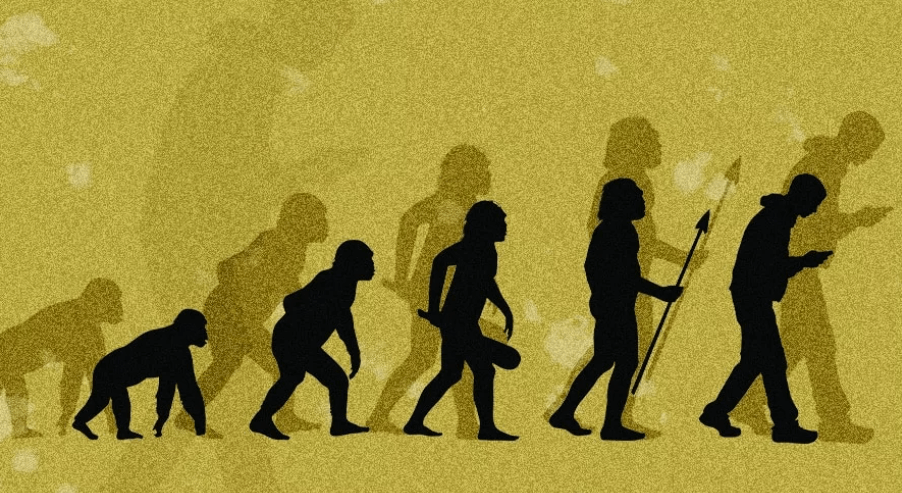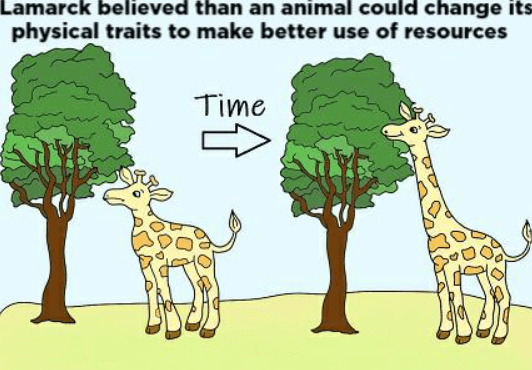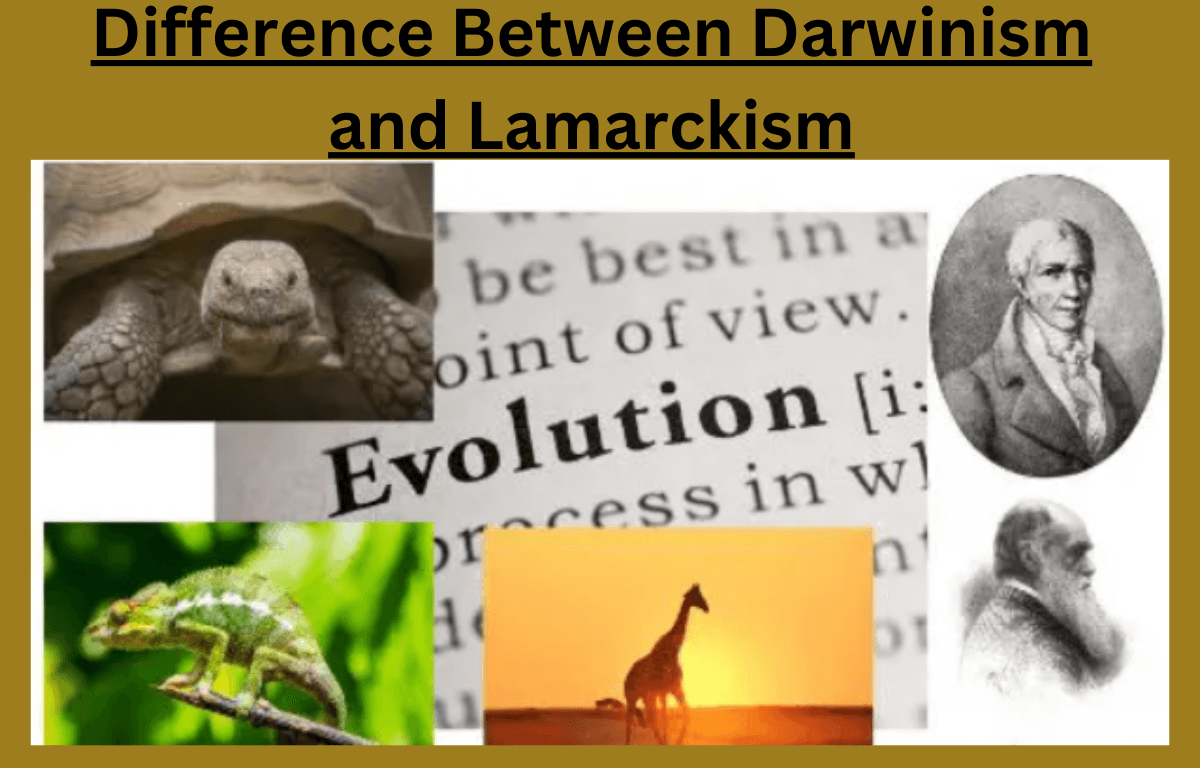Lamarckism, proposed by Jean-Baptiste Lamarck, posits that acquired traits during an organism’s lifetime are passed to offspring. Darwinism, proposed by Charles Darwin, suggests that species evolve through natural selection, where individuals with advantageous traits survive and reproduce. In essence, Darwinism relies on inherited variations, while Lamarckism involves traits acquired during an organism’s life influencing its descendants. The scientific community largely accepts Darwinism, as it aligns more with modern genetic understanding.
Darwinism and Lamarckism
Both Darwinism and Lamarckism are very important topics in Biology. Darwinism, by Charles Darwin, suggests that species are involved over time through natural selection. This means traits that help organisms survive and reproduce are passed on to their offspring, gradually shaping the species. It’s like a “survival of the fittest” process. Lamarckism, proposed by Jean-Baptiste Lamarck, believes that traits acquired during an organism’s life can be inherited.
Define Darwinism
Darwinism is a scientific theory that explains how species of living organisms change over time through a process called evolution. It was proposed by Charles Darwin in the 19th century. At its core is the idea of natural selection, which means that certain traits make individuals more likely to survive and reproduce in their environment. Over generations, these advantageous traits become more common in a population, while less helpful traits diminish. This gradual change leads to the diversity of life we observe today.

Imagine a population of birds with different beak sizes. If a specific beak size allows a bird to better feed on available food, that bird is more likely to survive and pass on its advantageous beak size to its offspring. Over time, more birds in the population will have this beneficial trait. Darwinism doesn’t involve a predetermined plan; instead, it’s about the survival of the fittest traits in a given environment, shaping the characteristics of species over generations.
Define Lamarckism
Lamarckism is an older and now mostly discredited idea about how species change over time. Proposed by Jean-Baptiste Lamarck in the 19th century, it suggests that characteristics acquired by an individual during their lifetime can be passed on to their offspring. Lamarck believed that if an organism developed a new trait or lost a trait due to its activities or environment, these changes would be inherited by its descendants.

For example, if a giraffe stretched its neck to reach higher leaves, Lamarck argued that this acquired longer neck would be passed onto its offspring. However, modern Biology has largely rejected this concept. We now understand that traits acquired during an individual’s lifetime are not directly passed on through genes.
In contrast to Darwinism, which emphasizes natural selection and the survival of the fittest traits, Lamarck suggests that an organism can actively change its features during its lifetime and transmit these changes genetically. Despite its historical significance, Lamarkism lacks substantial supporting evidence and has been largely replaced by Darwinian evolution in contemporary biological understanding.
Difference Between Darwinism and Lamarckism
Here we have discussed a few points based on the mechanism of evolution, inheritance, Time Frame of Change, Adaptation, etc., that highlight the difference between Darwinism and Lmarckisms.
| Difference Between Darwinism and Lamarckism | ||
| Aspects | Darwinism | Lamarckism |
| Mechanism of Evolution | Darwinism is based on natural selection, where organisms with advantageous traits for survival and reproduction are more likely to pass on their genes to the next generation. | Lamarckism proposes that acquired traits during an organism’s lifetime are inherited by offspring. |
| Inheritance | Darwinism emphasizes the inheritance of genetic variations that confer a fitness advantage. | Lamackism suggests the inheritance of acquired traits, acquired during an individual’s lifetime. |
| Time Frame of Change | Darwinism evolution occurs gradually over long periods through the accumulation of small, beneficial variations. | Lamarckism implies relatively rapid changes in response to environmental influences. |
| Source of Variation | Darwinism variation arises randomly through genetic mutations. | Lamarckism variation is a result of an organism’s response to its environment. |
| Irreversibility | Darwinism changes are cumulative and irreversible. | Lamarckism assumes acquired traits can be passed on and reversed if no longer needed. |
| Adaptation | Darwinism stresses the role of adaptation to the environment through natural selection. | Lamarckism adaptation occurs through the direct influence of the environment on an organism. |
| Evidence | Darwinism is supported by extensive fossil records, comparative anatomy, and molecular Biology. | Lamarckism lacks empirical support and is not consistent with modern genetic understanding. |
| Role of Use and Disuse | Darwinism emphasizes the importance of natural selection rather than the direct effect of an organism’s activities. | Lamarckism highlights the concept of the use and disuse of organs leading to their development or degeneration. |
| Environmental Impact | Darwinism changes in a population are driven by external environmental factors influencing survival. | Lamarckism changes are driven by the organism’s interactions with the environment. |
| Popularity and Acceptance | Darwinism widely accepted in the scientific community, forms the basis of modern evolutionary biology. | Lamarckism is largely discredited due to a lack of empirical support and inconsistency with genetic principles. |
Importance of Darwinism and Lamarckism
Lamarckism has been largely discredited in modern biology due to its inconsistency with genetic principles and lack of empirical support, Darwinism, or the broader concept of evolution through natural selection, remains of paramount importance. While Lamarckism is not scientifically valid, it serves as a historical reference point. Darwinism, on the other hand, remains fundamental to our understanding of the biological world, influencing various scientific disciplines and practical applications.
Importance of Darwinism
- Foundation of Modern Biology: Darwin’s theory is the cornerstone of modern biology, providing a unifying framework for understanding the diversity of life.
- Empirical Support: Supported by extensive evidence such as fossils, anatomy, and molecular biology, reinforcing its credibility.
- Predictive Power: Allows scientists to predict and discover new species or traits based on evolutionary principles.
- Medical Applications: Crucial for studying diseases, antibiotic resistance, and designing medical interventions like vaccines.
- Consistency with Genetics: Aligns with modern genetics, explaining the accumulation of genetic variations through natural selection.
- Adaptation to Changing Environments: Provides a robust framework for understanding how species adapt to environmental changes, aiding conservation efforts.
Importance of Lamarckism
- Historical context: Lamarckism, though outdated, played a historical role in early evolutionary thought, representing an early attempt to explain life’s complexity.
- Concept of Environmental Influence: Highlights the idea that the environment can shape an organism’s characteristics, which has relevance in environmental studies, albeit with different mechanisms.



 50 Vegetables Name for Kids in English a...
50 Vegetables Name for Kids in English a...
 Food Chain: Definition, Types, Examples,...
Food Chain: Definition, Types, Examples,...
 Human Respiratory System: Definition, Di...
Human Respiratory System: Definition, Di...













